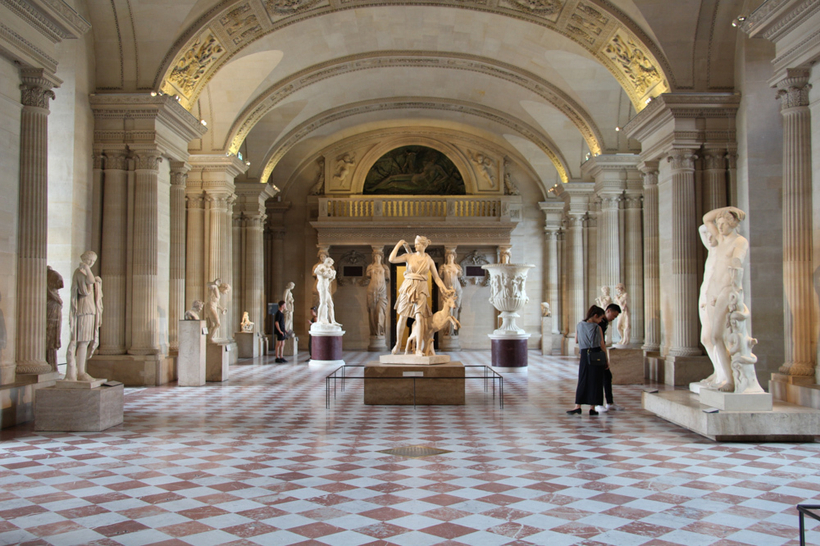I entered into the project of writing my latest book, The Louvre: The Many Lives of the World’s Most Famous Museum, with a fairly precise sense of how it would turn out. The rest was filling in the blanks, some of which yielded striking details that were indeed news to me: Napoleon’s wife Josephine hung the Mona Lisa over her bed, for instance; and for much of the reign of Louis XIV, a half-dozen dingy structures, one step up from tenements, stood in the middle of the glorious Cour Carrée. I also did not know that the museum remained open at the height of the Spanish Flu epidemic; that during W.W. II the landscaped parterres of the Louvre were transformed into victory gardens that grew carrots and leeks; or that, at the end of that conflict, German soldiers were rounded up and detained in the Cour Carrée. Above all, I felt an ever increasing admiration for my chosen subject, the largest museum on earth and one of the oldest, and for the refined nobility of its architecture and the unrivaled excellence of its collections, spanning 50 centuries and nearly half a million objects.
But perhaps it would be more useful to consider what the reader might never suspect and might wish to know about the production of such a book. Why, in short, do people like me write books like mine? What do we get out of it? The answer, assuming that you have not written such a book, might surprise you. Every author hopes, of course, for some measure of glory, be it ever so slight. Financial reward, be it ever so slighter, would be nice, too. But there is something else. John Ruskin said somewhere that whenever he wanted to learn about a subject he wrote a book on it. This led him at times into treacherous terrain: political economy, for example, about which he knew nothing when he began his book, and also, some would argue, when he had finished it.
In my case, I already knew a fair amount about the Louvre, but I wanted to know far more. From my previous experience writing books, I anticipated that I would emerge, after two years of constant fellowship with a subject that fascinated me, in firm possession of a body of knowledge that would otherwise have remained vague and inchoate. Finishing the book, I “graduated” with a deeper understanding of the precise differences between cultural figures who are apt to seem almost indistinguishable: the architects Jacques Lemercier and Louis Le Vau, for example, or the painters Laurent de la Hyre and Eustache Le Sueur. I mastered the succession of French monarchs from Philippe Auguste in the 12th century down to Louis Philippe in the 19th. Best of all, I finally understood the complex evolution of a building and an institution that I had admired throughout my entire life.
But the rewards of writing The Louvre went well beyond the acquisition of specific data. Michaël Darin begins his study of Parisian urbanism, Paris: La Forme d’une Ville, by quoting Jean-Paul Sartre quoting Jules Renard giving advice to his son on the subject of women: “Study one woman, but study her well, and then you will know la femme!” Whether this is good advice concerning women—and, if not, please understand that I am merely quoting Darin quoting Sartre quoting Renard—the point, I take it, is that to study one thing, anything, in its most radical specificity, will likely enhance your sense of many things generally. And indeed, my understanding of all sorts of subjects has been greatly strengthened by writing this book.
One final aspect of authorship deserves mention, and readers tend not to suspect it because writers tend not to say it: the creation of this book has been, from start to finish, a process of sustained and unalloyed happiness.
James Gardner’s The Louvre: The Many Lives of the World’s Most Famous Museum is out now from Atlantic Monthly Press
